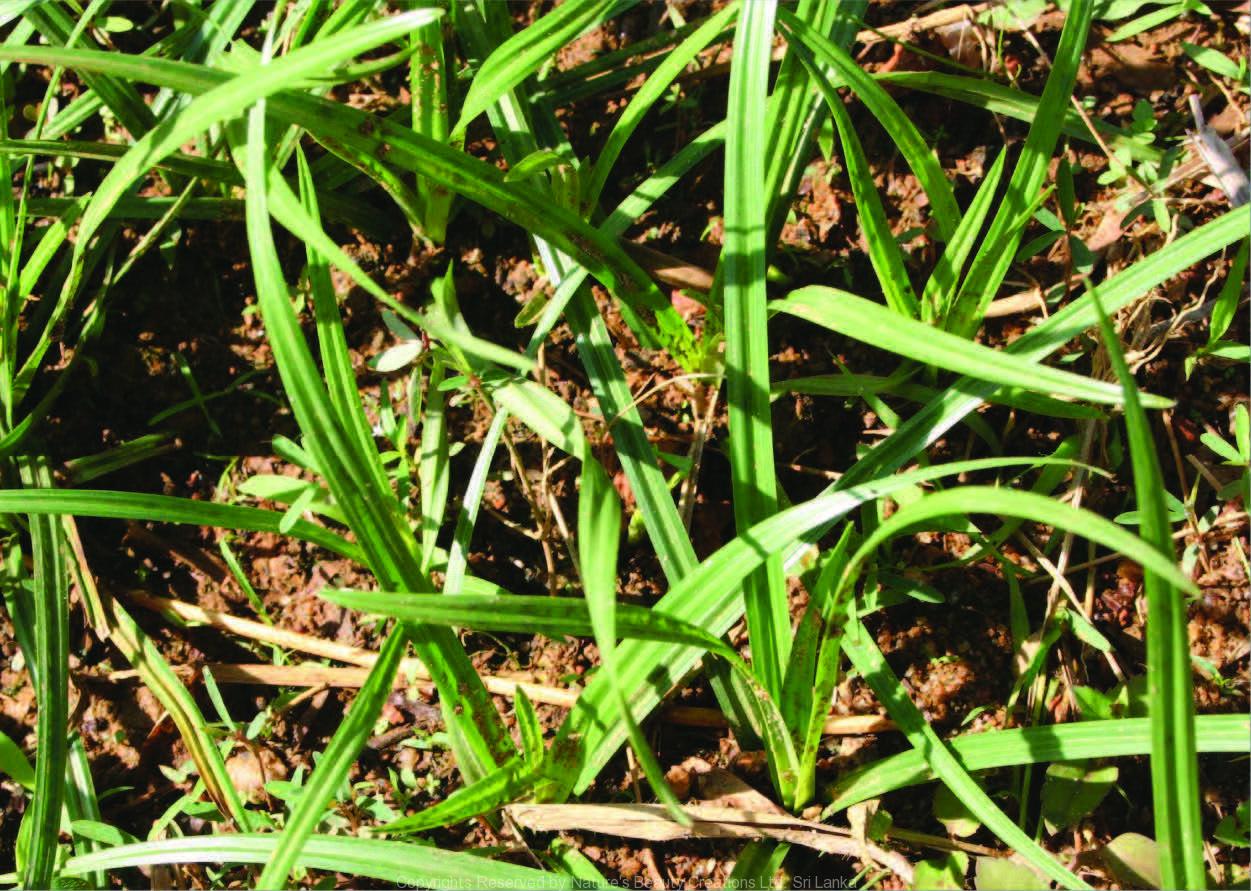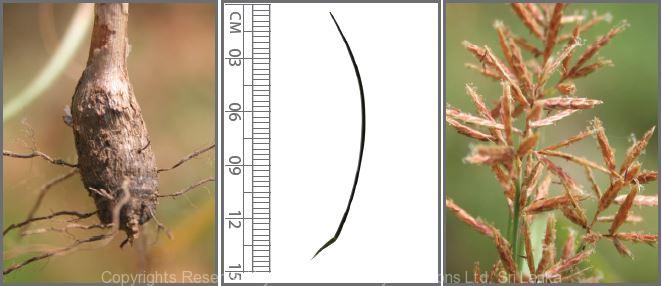

Traditional Knowledge
Useful plant parts :
Tuber
Uses in traditional medicine :
- Fresh tubers are boiled to prepare a herbal drink
- Tubers are astringent, antiseptic and carminative
- Used to treat acne, scorpion stings, ulcers, anorexia, acute dyspepsia, diarrhoea, dysentery, congestion of the liver, acute laryngitis, bronchitis, pneumonia, indigestion, liver complications, jaundice, malarial fever and uterine hemorrhage
Scientific Research
Chemical constituents:
Terpenes: cyprotene, α-copaene, cyperene, α-selinene, rotundene, valencene, γ-gurjunene, trans-calamenene, δ-cadinene, γ-calacorene, α and γ-muurolene, cadalene, nootkatene, cyperotundone, mustakone, α-cyperone from plant; isorotundene, norrotundene from essential oil and patchoulenone, caryophyllene derivatives, iridoid glycoside: rotunduside, theviridoside derivatives, procumbide derivatives from tubers
Bioactivity :
Methanol extract of rhizomes: anti-inflammatory, neuroprotective, antiallergic; methanol extract of aerial parts: antioxidative, antimutagenic; calamenene: antimalarial; ethanol extract of whole plant: antimicrobial; α-cyperone: COX2 and PGE2 inhibitor
Clinical:
Used in the formulations to treat obesity, urinary tract infection and its management
References : Jin, J. H. et al., (2011), Anti-allergic activity of sesquiterpenes from the rhizomes of Cyperus rotundus, Arch Pharm Res, 34(2), 223-8. Jung, S. H. et al., (2013), α-Cyperone, isolated from the rhizomes of Cyperus rotundus, inhibits LPS-induced COX-2 expression and PGE2 production through the negative regulation of NFκB signalling in RAW 264.7 cells, J Ethnopharmacol, 147(1), 208-14. Kilani, S. et al., (2005), Investigation of extracts from (Tunisian) Cyperus rotundus as antimutagens and radical scavengers, Environ Toxicol Pharmacol, 20(3), 478-84. Kilani, S. et al., (2008), In vitro evaluation of antibacterial, antioxidant, cytotoxic and apoptotic activities of the tubers infusion and extracts of Cyperus rotundus, Bioresour Technol, 99(18), 9004-8. Kumar, K. H. et al., (2013), Neuroprotective effects of Cyperus rotundus on SIN-1 induced nitric oxide generation and protein nitration: ameliorative effect against apoptosis mediated neuronal cell damage, Neurotoxicology, 34, 150-9. Pandey, K. K. et al., (2001), Urinary Tract Infection and its Management by Renalka, The Antiseptic, 98(8), 295-296. Paranjpe, P. et al., (1990), Ayurvedic treatment of obesity: a randomized double-blind, placebo-controlled clinical trial, Journal of Ethnophama- cology, 29, 1-11. Seo, W. G. et al., (2001), Inhibitory effects of methanol extract of Cyperus rotundus rhizomes on nitric oxide and superoxide productions by murine macrophage cell line, RAW 264.7 cells, Journal of Ethnophrmacology, 76(1), 59-64. Sonwa, M. M. and Konig, W. A., (2001), Chemical study of the essential oil of Cyperus rotundus, Phytochemistry, 58(5), 799-810. Thebtaranonth, C. et al., (1995), Antimalarial sesquiterpenes from tubers of Cyperus rotundus: structure of 10, 12-peroxycalamenene, a sesquiter- pene endoperoxide, Phytochemistry, 40(1), 125-8. Yazdanparast, R. and Ardestani, A., (2007), In Vitro Antioxidant and Free Radical Scavenging Activity of Cyperus rotundus, Journal of Medicinal Food, 10(4), 667-674. Zhou, Z. et al., (2013), A new iridoid glycoside and potential MRB inhibitory activity of isolated compounds from the rhizomes of Cyperus rotundus L, Nat Prod Res.
Copyrights Reserved By
Natures Beauty Creations




